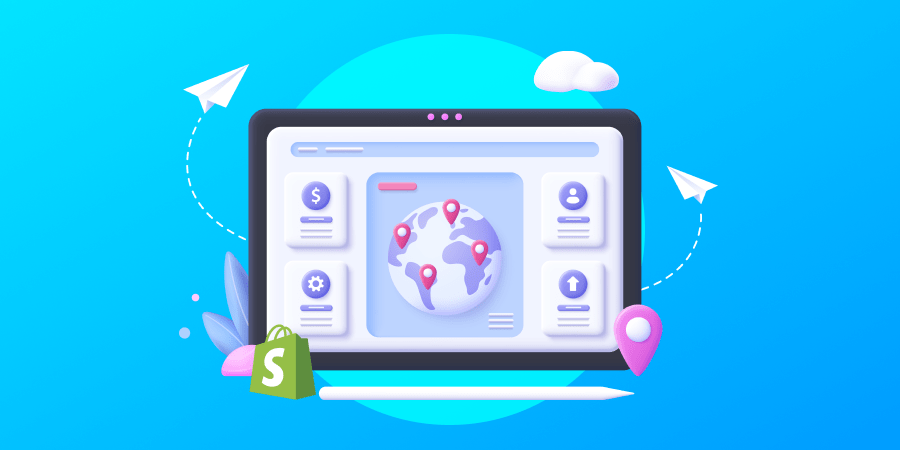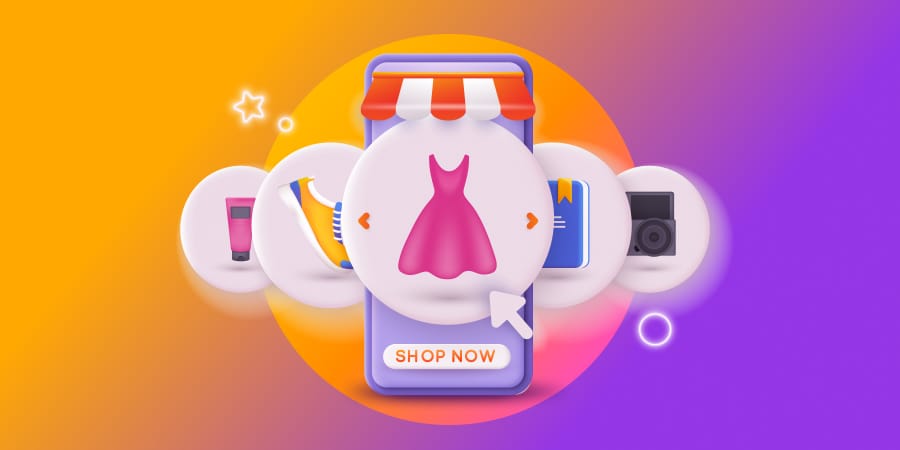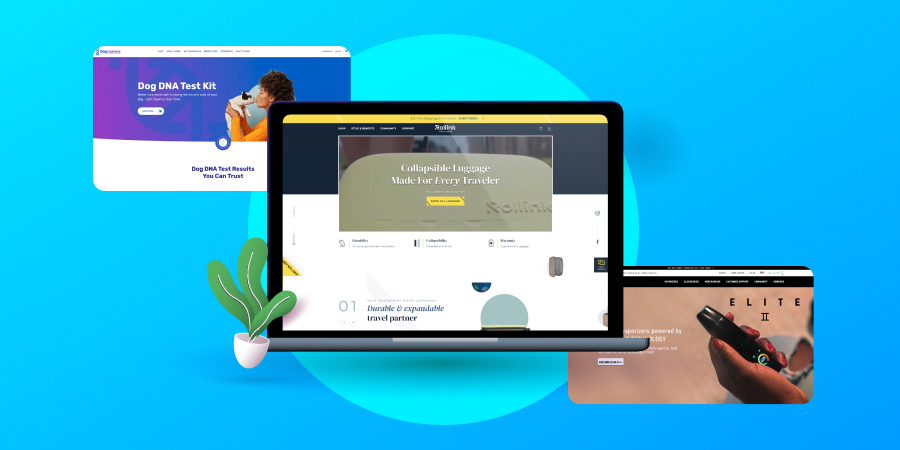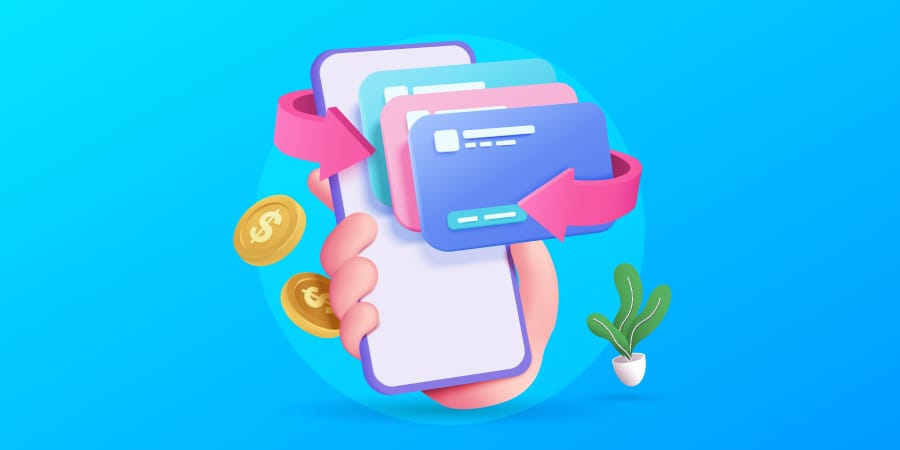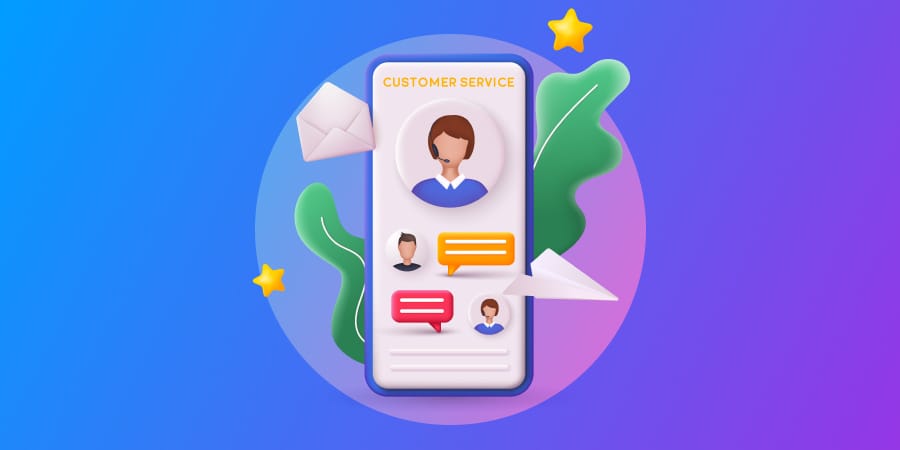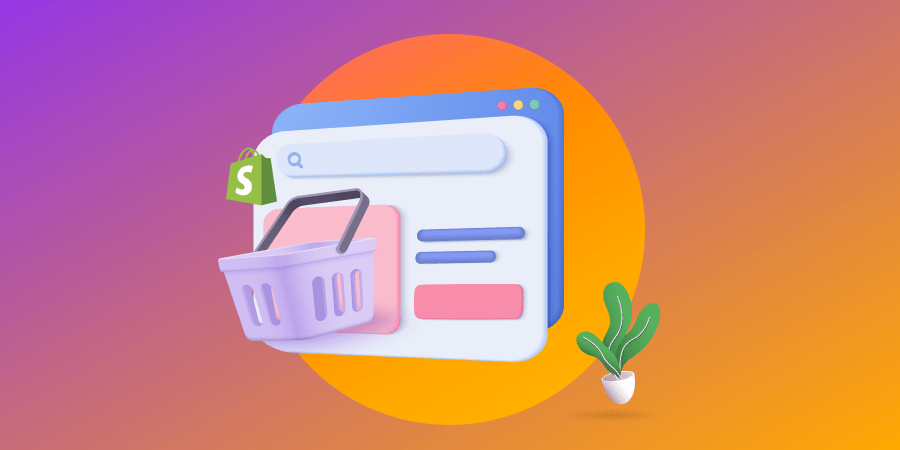A 2023 consumer trends report found that 13% of buyers are more likely to convert when shown a Shopify store translated into their native language.
If your goal is to reach consumers in different parts of the globe, your Shopify store needs to offer multiple languages to cater to your customer base.
Take a look at some best practices, benefits and examples to motivate and inspire you to make the translation jump to a high-functioning multi-language Shopify store.
[ez-toc]
Digital Silk builds custom Shopify websites. Request a quote
What Is A Multi-Language Shopify Store?
A multi-language Shopify store is an online store that offers content, products and services in up to 20 languages.
The goal is to make the store accessible to customers across the globe. Research shows that 65% of consumers prefer content in their language, even if it’s poorly written.
With a multi-language Shopify store, you can target new markets, reach more customers and provide a better shopping experience.
How To Build A Multilingual Shopify Store
Shopify has a global presence in over 175 countries.
Building a multilingual Shopify store can help you reach this global audience and expand your customer base. However, creating a seamless multilingual experience for your customers requires careful planning and execution.
Here are six ways to build a multilingual Shopify store:
1. Use Shopify’s Built-In Language Tools
Shopify offers built-in language tools that allow you to translate your store’s content into multiple languages. This is a quick and easy way to get started with a multi-language store.
Here are some of the main built-in language tools that Shopify offers:
- Language editor: The language editor feature allows you to edit and translate the text that appears on your store’s website, including buttons, menus and product descriptions.
- Language detection: Shopify’s language detection feature automatically detects the language of your customers’ browsers and displays your store in the corresponding language, if a translation is available. One popular app for content translation that Shopify recommends is T-Tab.
- Multiple domains: With Shopify’s multiple domains feature, you can create a separate domain for each language version of your store.
- Multi-currency support: Shopify’s multi-currency support allows you to display prices in each language and currency, based on the customer’s location and language preference.
- Language-based URL structure: Shopify’s language-based URL structure allows you to create language-specific URLs for each language version of your store. To illustrate, let’s say your main website domain is shop.com. If you decide to add two more languages, such as French (fr) and German (de), then your store’s URLs will be modified to shop.com/fr and shop.com/de.
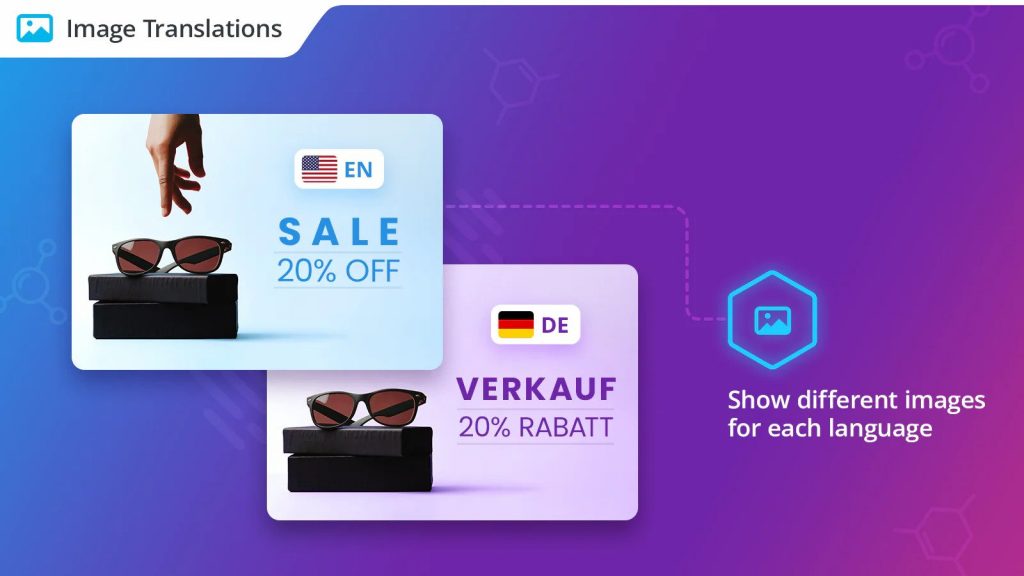
[Source: Shopify]
2. Install A Language Translation App
There are many language translation apps available on the Shopify app store that can help you translate your store’s content. These apps can be easy to use and provide high-quality translations.
Here are some popular language translation apps for Shopify:
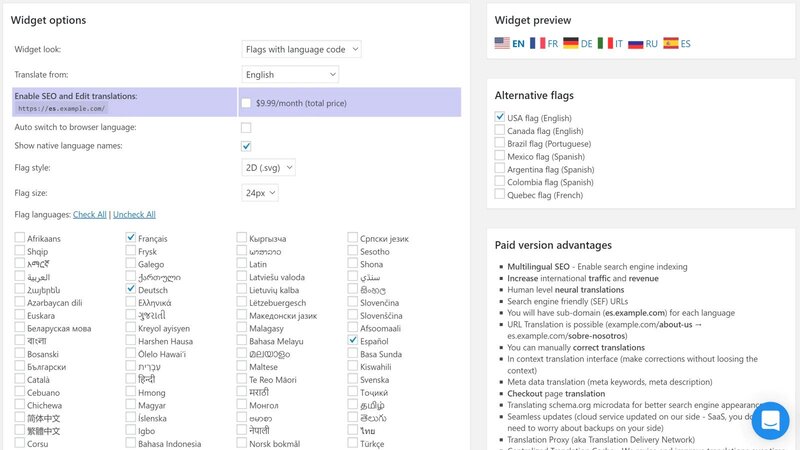
[Source: Shopify]
3. Use A Third-Party Translation Service
You can also use a third-party translation service to translate your store’s content. This is a good option for large stores to take when needing highly professional translations.
Here are some examples of third-party translation services that you can use for your Shopify store:
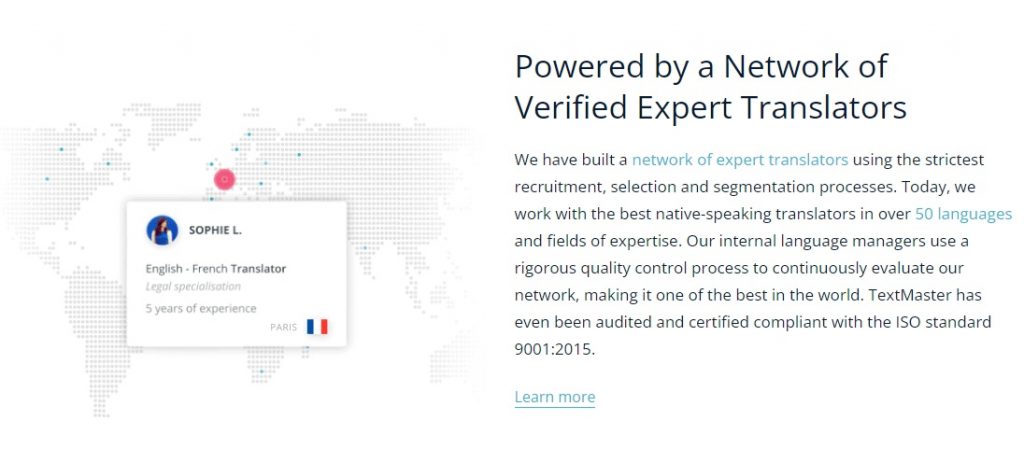
[Source: TextMaster]
4. Create Separate Shopify Stores
You can create separate Shopify stores for each language you want to offer and link them together using language selectors.
A popular approach provided across multiple eCommerce platforms, like Magento, this allows allows you to customize the design and content for each language and can be useful for larger businesses with significant global reach.
Some of the language selectors you can use include:
- Dropdown menu: Dropdown menus are the most common language selectors that allow users to select their preferred language by simply clicking on their language.
- Flags: Using flag images can be particularly useful for international websites, as it allows users to quickly identify the language they are looking for.
- Text links: With text links, users can click on a link representing their preferred language to switch the website content to that language.

[Source: Shopify]
5. Use Pre-Made Themes For Translation
Another way to create a multi-language Shopify store is by using pre-made themes for translation, which are available in Shopify’s theme marketplace.
These themes include pre-built language support and translation-ready elements, allowing you to customize and localize your storefront content to reach a global audience without extensive coding or development work.
6. Hire A Development Agency To Create Custom Language Solutions
If you have specific language requirements or need custom language solutions, a professional development agency can create a multi-language store for you.
With extensive experience in Shopify custom solutions, experienced agencies are able to save you development time, enhance your reach and boost conversion.
Digital Silk is a full-service web design agency that specializes in building multi-language Shopify stores across various industries, from fashion and technology to household products and beyond.
Talk to our experts and get a custom quote for your project.
Our experts can help. Set up a Consultation
Best Practices For Building A Multi-Language Shopify Store
When setting up multiple languages on Shopify, it’s important to follow some best practices to ensure a seamless and effective experience for international customers.
Here are some best practices to follow when establishing multiple languages on Shopify:
1. Personalize & Choose The Right Languages
Based on research conducted by McKinsey, personalization can increase customer satisfaction rates by 20%, and improve conversion rates by 10-15%.
When setting up multiple languages on Shopify, it’s important to choose the right languages that are relevant to your target market.
Consider the languages spoken by your existing customers along with the languages used in the countries you want to target.
2. Make Sure Your Translations Are Accurate
It’s important to ensure that your translations are accurate and appropriate for your target audience.
Use professional translation services or native speakers to review your translations and make sure they are culturally appropriate.
Avoid word-for-word translation, since it may lead to the loss of nuances and emotions, potentially decreasing the impact on the potential customer.
3. Use Clear & Consistent Language
Using clear and consistent language is essential when setting up multiple languages on your Shopify store.
This means using the same terminology and phrasing across all languages and avoiding idioms and cultural references that may not translate well.
It is also important to use language that is appropriate for your target audience, as certain words or phrases may have different connotations in different languages.
Using precise and consistent language in brand messaging is crucial because it helps establish trust and credibility with the audience.
4. Optimize Your Site’s SEO For Each Language
Once you adapted your content and user experience to suit the cultural, linguistic and regional preferences of the target audience, it is time to optimize your website for search engines in each language.
This involves using language-specific keywords, titles, descriptions and meta tags. Additionally, it is important to create language-specific content and URLs, as this helps search engines understand that you are targeting a specific language and geographic region.
By doing this, you increase the visibility of your website and improve your chances of reaching new customers. Working with a search engine optimization agency can help you in the process.
Don’t forget to inform Google about the language variations of your store by indicating your language- or region-specific pages.
To do so, use hreflang, an HTML attribute, which helps search engines understand the language and location relevance of different versions of a page and helps Google Search navigate users to the respective version of your content based on region or language.
5. Simplify The Switch Between Languages
It is important to have a visible and easy-to-use language selector on your website so that customers can quickly switch between the languages offered.
This can be achieved by placing the language selector in a prominent location, such as the header or footer of your website, and ensuring that it is easily identifiable.
Providing clear and concise language options can also help customers navigate the website more easily, leading to a better user experience and increased customer satisfaction.
What Are The Benefits Of Creating A Multi-Language Shopify Store?
By providing content in a variety of languages, you’re catering to consumers around the globe and offering a more personalized experience, which directly impacts conversion.
Here are some benefits of using a multi-language Shopify store:
1. Increased Reach
By offering your store in multiple languages, you can reach a wider audience and tap into new markets. This can help you grow your customer base and increase your sales.
For example, let’s say you’re selling handmade jewelry online, and you’re currently only providing content in English.
By creating a multi-language store and adding translations in Spanish and French, you can target customers in countries where those languages are spoken, such as Spain, France, Canada and many more.
2. Improved Conversions
Customers are more likely to make a purchase when they can read product descriptions, reviews, and other content in their preferred language. This can lead to higher conversion rates and increased revenue.
In addition, by providing a seamless and localized shopping experience, you can improve your Shopify checkout page to reduce the chances of cart abandonment.
3. Optimized Checkout
It’s crucial that Shopify checkout optimization is one of your priorities. By having your Shopify store available in multiple languages, you’re able to provide better checkout instructions for customers which can lead to more conversions.
One way to optimize your Shopify checkout for multilingual users is to add a translation app such as LangShop or a service designed to automatically translate your checkout pages into different languages.
You can also use Shopify’s built-in language tools to translate your checkout pages or hire a Shopify development agency to create a custom language solution.
4. Competitive Advantage
By offering your store in multiple languages, you can gain a competitive advantage over other merchants who only offer their stores in one language.
This can help you stand out in crowded markets and attract more customers.
One example of a Shopify store that showed how much of a competitive advantage you can gain is GymShark.
With their multi-language Shopify store, Gymshark was able to cater to customers in a variety of countries, including Spain, Germany, France, and Italy.
In comparison to some of their competitors who don’t have a multi-language store, such as Alphalete, it shows how much multi-language optimization can help.
5. Better SEO
A multi-language store can help you improve your SEO by targeting keywords and search terms in multiple languages. This can help you rank higher in search engine results pages and drive more traffic to your store.
Make sure your website and languages are optimized for Google.
Google supports various methods for labeling languages or regional variants of pages, including hreflang annotations and XML sitemaps so be sure to mark your pages appropriately.
6. Improved Customer Experience
When customers can communicate with your store in their preferred language, they are more likely to have a positive customer service experience. This approach usually leads to return customers and loyalty.
7. Enhanced Brand Reputation
Finally, creating a multi-language Shopify store can enhance your brand reputation. Providing a seamless and localized experience to customers in their native language can influence how a company is perceived.
By providing information about your products and services in various languages, you are showing that you are committed to serving a diverse customer base and providing a high-quality user experience for customers, regardless of their language preferences.
This is one of many types of branding strategies you can use for enhancing brand reputation.
Examples Of Shopify Stores With Multiple Languages
Many popular brands and businesses have already taken advantage of the benefits of a multi-language Shopify store.
Here are a few examples of successful multilingual Shopify stores:
1. Filo
Filo is a company that produces small Bluetooth tracking devices that can be attached to nearly any item. Customers can utilize the Filo app to locate any lost object within Bluetooth range or view its previous GPS location.
Their goal was to localize site elements and maximize SEO in every possible target language for quick market share expansion.
As a solution, they used Shopify and Bablic, a website localization platform that allows businesses to translate and manage their websites in multiple languages.
Bablic successfully maintained the stability of Filo’s website during its rollout without experiencing any downtime.
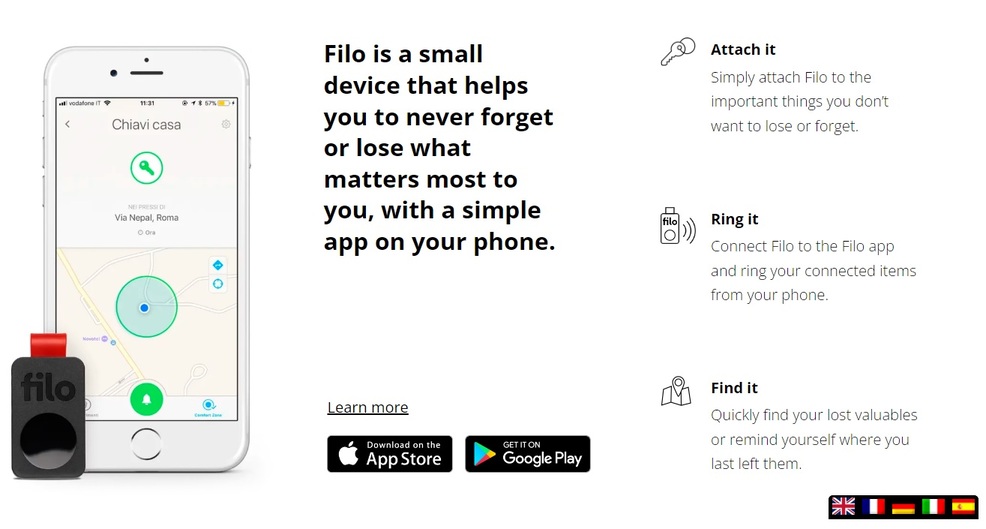
The most noteworthy outcome, however, was the significant improvement in sales metrics: the customer bounce rate decreased to 10-15%, the time spent on the site doubled, and the overall sales conversion rate increased by 40%. This resulted in a revenue gain of approximately 7-9%.
2. Inclusive
Inclusive Inc is a non-profit organization based in the United States that aims to empower individuals from diverse backgrounds to reach their full potential and remain actively engaged in their communities through transformative experiences.
Despite this, just like any other online store looking to expand into international markets, they encountered the obstacle of effectively reaching a worldwide audience. As a solution, they chose to localize their website content.
After testing four different translation tools, they ultimately decided to use LangShop, a language translation app on Shopify. As a result, Inclusive Inc has now been translated into 20 different languages, including Arabic, German, Italian, French, Swedish, Chinese and more.
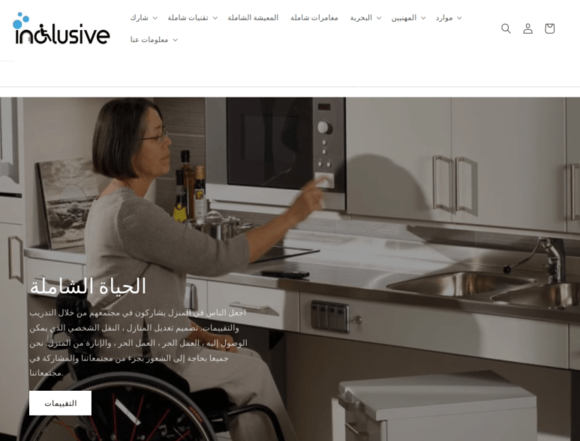
Since implementing LangShop, Inclusive Inc has experienced a significant increase in website traffic, with a 250% boost in overall visitors.
3. Jimmy Fairly
As an independent French eyewear brand, Jimmy Fairly has established a reputation for designing, manufacturing, and selling their own high-quality products at a fair price by eliminating the middleman.
Despite being a French-based brand, 19% of their sales were generated from international markets, opening a need for English content. They were in search of a quick website translation solution so they found Weglot, an automated translation tool.

Following just one month of integrating Weglot, the brand’s international sales skyrocketed to four times their previous levels, and after eight months, they had increased by an incredible six times.
Create A Multi-Language Shopify Store With Digital Silk
As a full-service web design agency specializing in Shopify development and eCommerce development, Digital Silk offers various Shopify services to help your store increase conversions and revenue.
Our team is proficient in delivering multi-language Shopify solutions, which allows us to cater to a diverse range of clients and expand their reach to global audiences.
Our services include Shopify design, development, Shopify SEO and marketing, to help you build a user-friendly, high-performing Shopify website.
In addition to implementing multi-language support, we can:
- Develop custom Shopify themes and templates
- Customize existing Shopify themes and templates
- Integrate third-party apps and plugins
- Create custom apps and plugins
- Migrate data from other platforms to Shopify
- Optimize site performance and speed
- Provide ongoing support and maintenance
- Develop custom payment and shipping solutions
- Integrate third-party apps and plugins
At Digital Silk, we prioritize project ownership to ensure that every project receives the utmost care and attention, transparency to keep our clients informed every step of the way, and a results-driven approach to deliver outcomes that exceed expectations.
Our team of experts will help you grow your reach, engagement and conversion with your new multilingual Shopify store.
"*" indicates required fields

